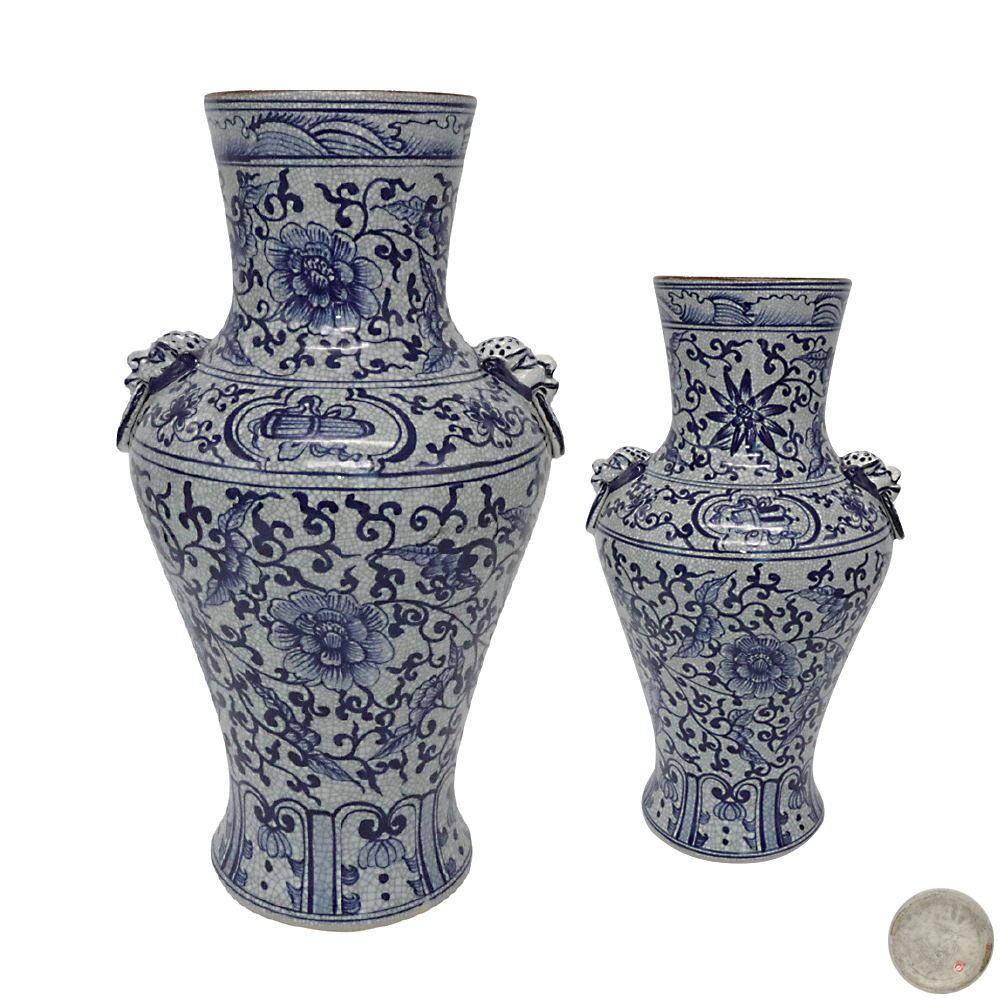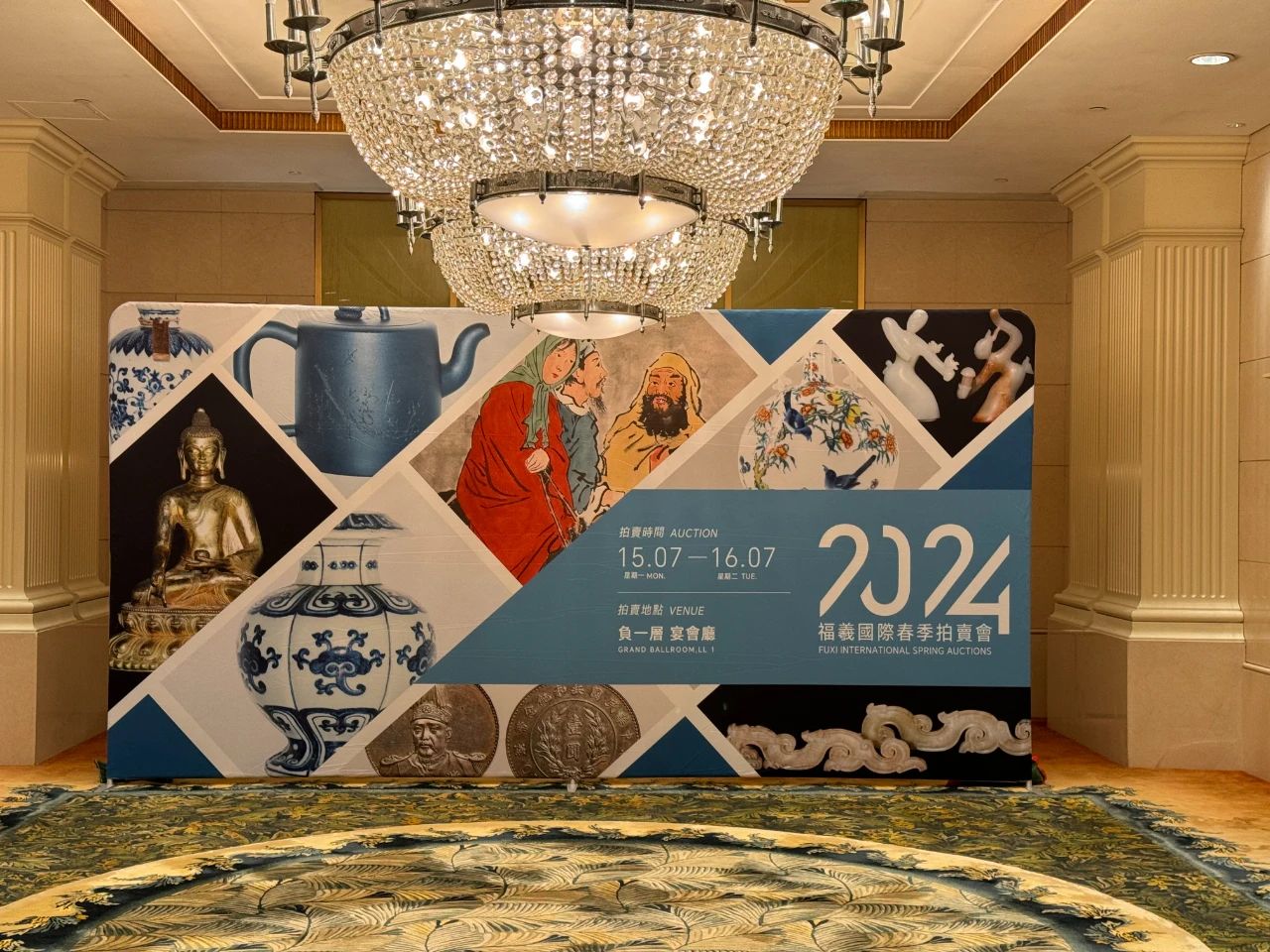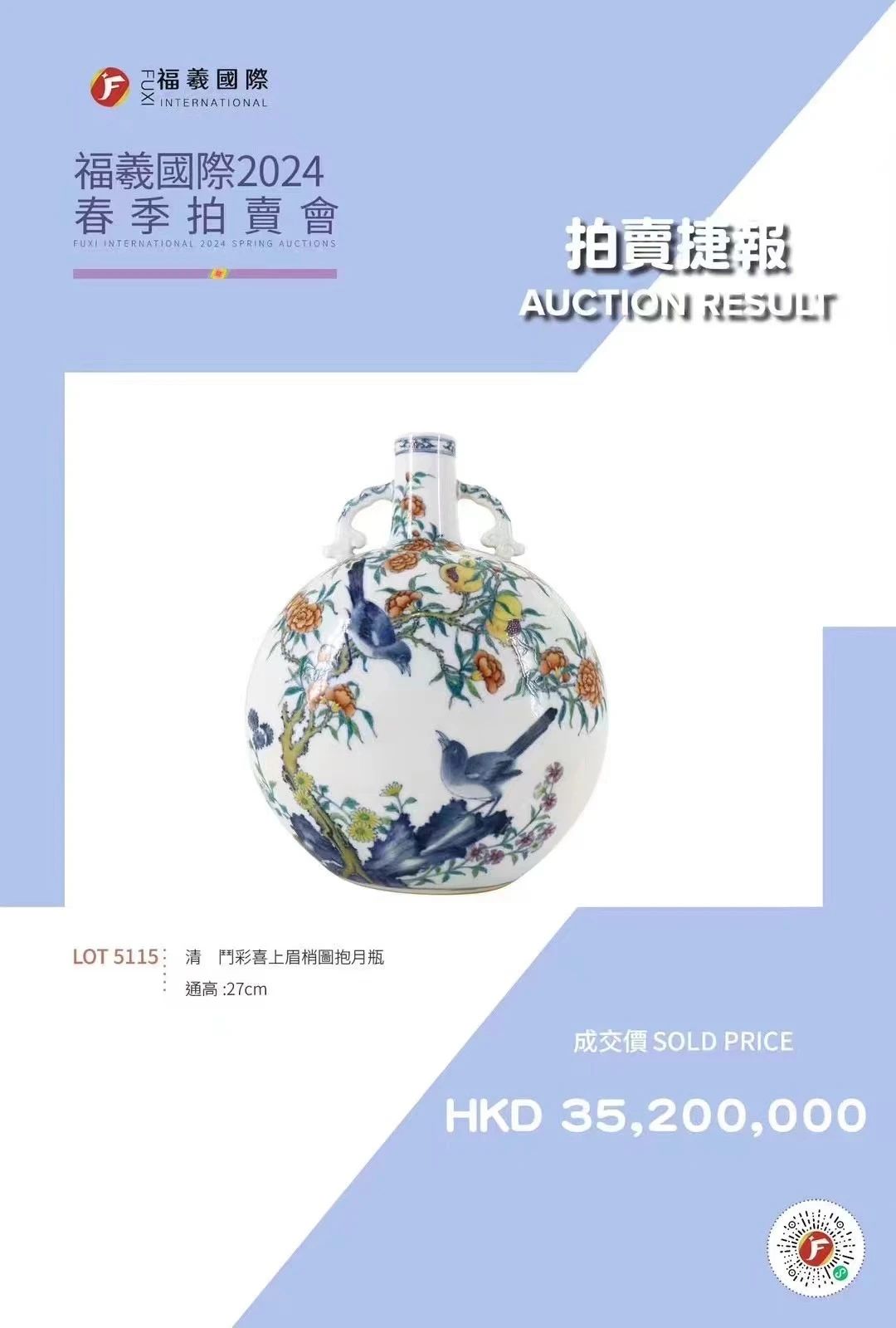

福羲國際(香港)拍賣顧問有限公司
FUXI INTERNATIONAL(HK) AUCTION CONSULTANT CO.,LTD.
精品预展




|
斷定/款識 Years |
清代 Qing Dynasty |
|
規格 Specifications |
口径:18.7cm 底径:21.5cm 高:58.7cm MD:18.7cm BD:21.5cm H:58.7cm |
|
數量 Number |
1件 1pc |
|
起拍價 Starting price |
1600000(HKD) |
|
拍賣時間/地點 Auction time/place |
2018 Macao Auction |
哥釉器,亦名碎釉瓷,始于宋代,是宋代五大名窑之一,但宋代哥釉传世极少。哥釉瓷有一个重要的特征是釉面开片,这是瓷器釉面的一种自然开裂现象。明代时期,景德镇成功烧制哥釉器。明晚期至清乾隆,哥釉瓷再一次达到顶峰。其细碎的纹片,肥厚的釉层成为当时瓷器争相效仿的宠儿。哥釉青花龙纹是在玉质般的哥釉上面描绘鲜艳、明亮的青花,使古典的青花与暗八仙纹相得益彰,互为衬托,极为美观。哥釉器青花纹饰一经推出,一时成为备受追捧的“香饽饽”。
Ge kiln bottle, also known as broken glaze porcelain, began in the Song Dynasty, is one of the five famous kilns in the Song Dynasty, but the Song Dynasty brother glaze handed down very little. One important feature of glazed porcelain is glaze opening, which is a natural cracking phenomenon of porcelain glaze. In the Ming Dynasty, Jingdezhen successfully cooked enamel ware. From the late Ming Dynasty to the Qing Dynasty, Qian Long's Glazed Porcelain reached its peak again. Its finely striped and thick glaze became the favorite of porcelain at that time. Brother glaze blue and white dragon pattern is a jade-like brother glaze painted bright blue and white, so that the classical blue and white and dark eight immortal patterns complement each other, set off each other, very beautiful.
總成交額:HKD 7.08 億
SUCCESSFUL CONCLUSION
人間最美的七月天,2024年福羲國際春拍以總成交額7.08億,圓滿謝幕。預展加拍賣共六天時間,川流不息的觀衆,現場此起彼伏的槌聲,網絡熱搜刷屏的好消息,再次堅定福羲國際守望的信心。




7月16日瓷器專場拍賣吸引10萬余人次網絡直播圍觀,現場座無虛席,網絡競拍也同樣激烈,見證瓷器藝術市場的盛況,充分證明我們的拍品贏得了廣大藏家和藝術愛好者的廣泛關注與深厚信賴。我們衷心感謝每壹位參與拍賣的朋友,正是妳們的熱情參與和支持,以及對藝術的不懈追求,成就此次拍賣的圓滿收官。
前瞻市場 優化拍品結構
各門類拍品減量提質,贏得市場認可
在弱勢的經濟環境下如何組織好一場拍賣,福羲國際時刻關注拍賣市場喜好的變化。精品、生貨受到大家的追捧程度越來越高,LOT5115 清乾隆 鬥彩喜上眉梢圖抱月瓶 以7倍于估價落槌,遠超我們的預估價。

細數拍賣場上的珍罕之作,皆經曆線上網絡、電話競投以及現場藏家的多輪爭奪。更讓我們意識到藏家們對藝術的熱愛和追求。瓷器專場拍品方面,官窯價格依然堅挺,其他各類普通作品的關注度有所降低,大家的審美和鑒賞水平越來越高,精品愈加受到追捧,這就爲我們的征集提出了更高的要求。福羲國際專家團隊將繼續秉持品質保障與專業服務的核心理念,一如既往地爲藏家朋友甄選具有極高收藏價值的藝術品,爲藏家朋友帶來最優質的藝術品與最愉悅的藝術體驗。


兵無常勢,水無常形,時代總是在變局之中開創新局面,基于對拍賣市場形勢的敏銳洞察和深入研判,線下舉辦大型拍賣會積極擁抱互聯網與技術革新,協同推進多元豐富的線上拍賣業務。在風雲變幻的藝術拍賣市場已走過十年的福羲國際,再次邁出堅實步伐,期待我們下一場法國巴黎藝術周再會,一起開創無限可能。
版權所有©福羲國際(香港)拍賣顧問有限公司 Copyright © 2018 fuyi.hk All rights reserved. 訪客統計

福羲國際(香港)拍賣顧問有限公司
FUXI INTERNATIONAL(HK) AUCTION CONSULTANT CO.,LTD.

服務電話:+852 5426 6824
投訴電話:+852 6062 8396
聯系郵箱:wwysp@fuxiauctions.com
公司地址:香港九龍觀塘駿業街52-56號中海日升中心31樓G室






